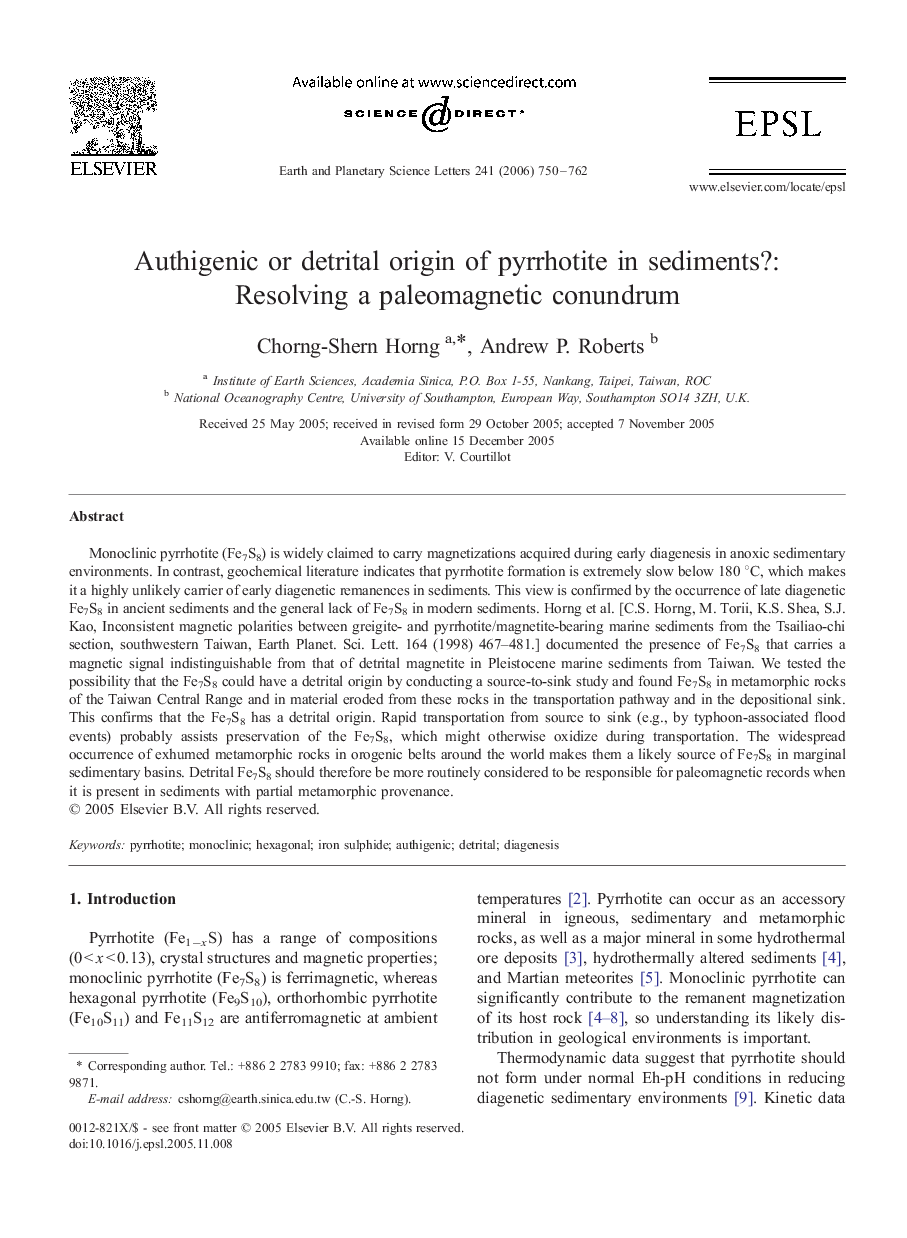| Article ID | Journal | Published Year | Pages | File Type |
|---|---|---|---|---|
| 4681216 | Earth and Planetary Science Letters | 2006 | 13 Pages |
Monoclinic pyrrhotite (Fe7S8) is widely claimed to carry magnetizations acquired during early diagenesis in anoxic sedimentary environments. In contrast, geochemical literature indicates that pyrrhotite formation is extremely slow below 180 °C, which makes it a highly unlikely carrier of early diagenetic remanences in sediments. This view is confirmed by the occurrence of late diagenetic Fe7S8 in ancient sediments and the general lack of Fe7S8 in modern sediments. Horng et al. [C.S. Horng, M. Torii, K.S. Shea, S.J. Kao, Inconsistent magnetic polarities between greigite- and pyrrhotite/magnetite-bearing marine sediments from the Tsailiao-chi section, southwestern Taiwan, Earth Planet. Sci. Lett. 164 (1998) 467–481.] documented the presence of Fe7S8 that carries a magnetic signal indistinguishable from that of detrital magnetite in Pleistocene marine sediments from Taiwan. We tested the possibility that the Fe7S8 could have a detrital origin by conducting a source-to-sink study and found Fe7S8 in metamorphic rocks of the Taiwan Central Range and in material eroded from these rocks in the transportation pathway and in the depositional sink. This confirms that the Fe7S8 has a detrital origin. Rapid transportation from source to sink (e.g., by typhoon-associated flood events) probably assists preservation of the Fe7S8, which might otherwise oxidize during transportation. The widespread occurrence of exhumed metamorphic rocks in orogenic belts around the world makes them a likely source of Fe7S8 in marginal sedimentary basins. Detrital Fe7S8 should therefore be more routinely considered to be responsible for paleomagnetic records when it is present in sediments with partial metamorphic provenance.
